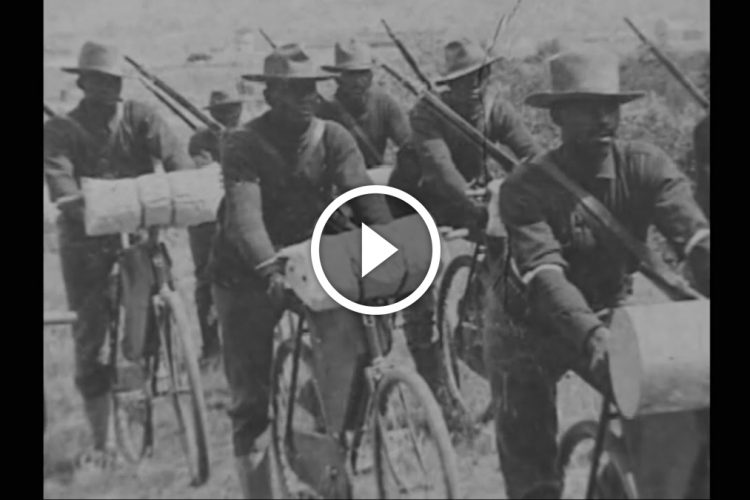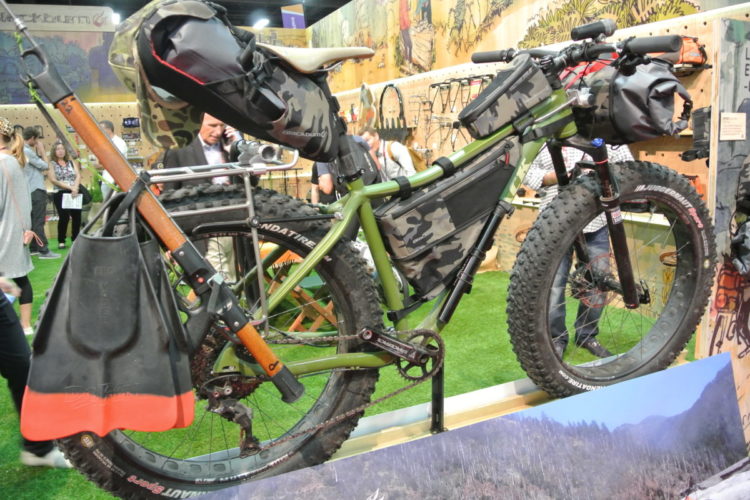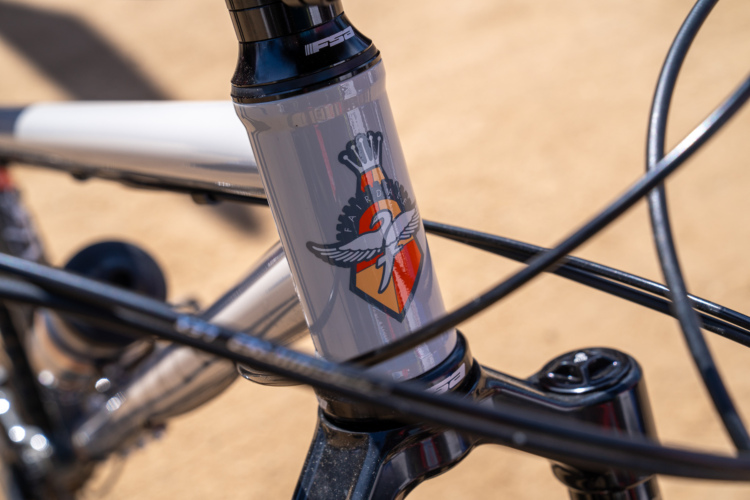In today’s mountain biking landscape, you’d be forgiven for thinking that the only way to experience bikepacking would be to head to your local bike shop and pony up your hard-earned Benjamins for some top-shelf equipment. Thankfully for you, I tried an experiment this past weekend to test not only my dirtbag mettle, but also to prove a hypothesis that, with enough determination and out of the box thinking, you can have a successful bikepacking experience without breaking the bank.

I was also trying to test my masochistic limits by taking a fully-laden 1978 Schwinn Super LeTour up a route with a sustained 9% grade. I never claimed to be a smart man.
I had lent my mountain bike to a friend for the week who was off grinding gravel with her sister who was in town visiting Alaska, when the hankering to bikepack struck me. Initially, I thought that this craving would go unfulfilled and that I would have to find a different outlet for my wanderlust. As I paced my apartment, I started eyeing the old Schwinn that I had just rescued from years of destitution. “Those tires look kinda chunky.” I thought to myself. “Cross bikes have kinda chunky tires and they can ride on gravel just fine.” With that, the seed of a bad idea took hold in my impressionable brain. Before I knew it, I had my framebag hanging from the top tube and I was filling it with camping gear “just to see if it fit,” because no one would take a vintage racing bike from the late 70s on an offroad adventure. It’s sacrilege.

Call me a heathen, but I continued my sinful ways and strapped on my panniers and stuffed them with a light overnight loadout. I portered the Schwinn, newly-enlisted as an oddball bikepacking recruit, down my apartment’s front steps, clipped in to my pedals, and pointed myself due east to test my harebrained scheme.
After a stop in town for vital supplies (beer), I made my way up the mountain via the imaginatively-named Gas Line Trail, a rarely-travelled service path that follows a major natural gas delivery line. The bike seemed to be handling the gravel and dirt surprisingly well, and I gained some confidence that I may not end up with a mangled mess of steel and rubber at the end of my trip. Would I have been faster on a mountain bike? Most definitely. Would the others that I saw on the trail think I was a sane person if I was on a mountain bike? Also most definitely. In spite of what I was pedaling, I found myself having a truly enjoyable time, and all thoughts of what standards have to be followed and what gear is truly necessary started to drift off along with the dust kicked up by my dry-rotting no-name tires.

After following the Gas Line Trail up to the top of a smaller mountain, I had the pleasure of bombing down the backside, which was a joyfully butt-puckering experience. With newly-acquired confidence in my impromptu bikepacking rig, I attacked the remaining rolling hills on the Gas Line Trail with the same veracity that I would on my mountain bike. Finishing out the trail put me right at a trailhead for the Hillside mountain biking trails, which were Anchorage’s first real trails designed with IMBA standards in mind. Known for their steep ascents and tricky technical sections, I initially coasted past the trailhead, dismissing them for now, but promising that I would return with a proper bike in the future.
Without a conscious thought, I felt my hands slowly clamping down on the well-worn Weinemann brake levers, the tired brake pads letting out an unsatisfying squeal as they pressed on the chrome rims. I put a leg down to balance my rig and looked over my shoulder, back to the trailhead marker. Opening my growler, I took a swig of IPA and felt my hesitation diminish. One more swig of bravery gravy and I found myself geared all the way down and spinning (as much as an old road bike can) up the singletrack.

Once again, I found myself pleasantly surprised by how capable and composed the bike was on trail. Granted, still not as fast as a mountain bike would be, but I was still able to cover ground and experience the simple joy of pedaling through the woods. Midway up the Queen Bee Loop, I realized that even without an ideal gear selection, adventure can still be had. Dodging roots and rolling over modestly sized rocks, I found my way to the terminus of the trail and on to a smooth and deceptively-steep ribbon of pavement. Disoriented by the sudden change from singletrack to tarmac, I pulled up my planned trip route and upon finding the nearest trailhead, I pointed my front wheel down the mountain for a quick blast to the Powerline Pass, the last leg of my trip.

As I gained altitude, the sun made its characteristically lazy descent and provided just enough light to allow me to find my way to camp for the night. After setting out the bivy and starting dinner, I relaxed and reflected back on the ride. Though I love new technology and would happily ride any of the technological wonder-bikes that are available in our marketplace, I couldn’t help but wonder if we, as a cycling community, lose the plot from time to time.
At the core of it all, cycling is meant to move you from one place to another, but if too much time is spent worrying that the gear you own is inadequate or that your bike isn’t up to the task, you can find yourself stuck at home when you could be out on an adventure. I’m not calling for everyone to go subject themselves to the abuse of riding an old steel bike through singletrack trails, but sometimes it does you good to put your concerns aside and just run what ya brung.
Your Turn: Have you ever grabbed an old beater bike and just gone on an adventure? How did it go?



















